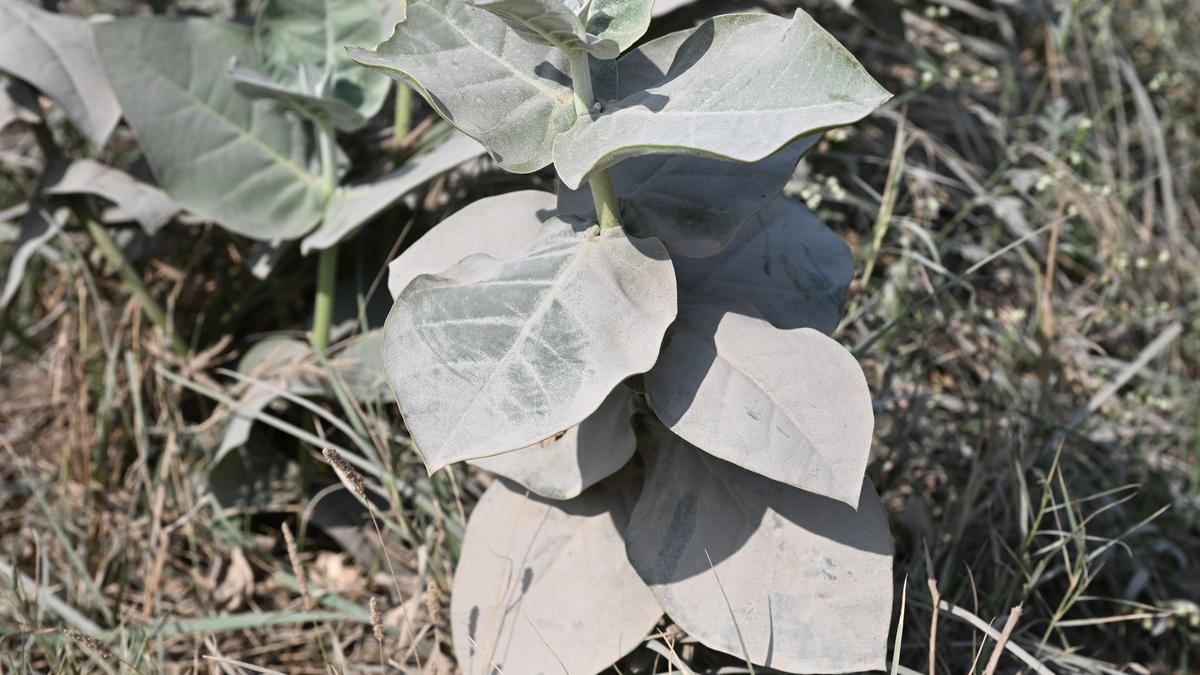Sree Narayana Guru

- 29 Jun 2025
In News:
The Prime Minister recently attended the centenary celebrations of the historic 1925 conversation between Mahatma Gandhi and Sree Narayana Guru, held at Vigyan Bhawan, New Delhi. The event marked the enduring relevance of Guru's message of social equality, spiritual unity, and reform.
Who was Sree Narayana Guru?
- Born: 20 August 1856, in a backward Ezhava community in Kerala
- Died: 20 September 1928
- Role: Spiritual leader, philosopher, poet, yogi, and one of India’s foremost social reformers from Kerala
Historical Context:
- During the 19th century, Kerala society was deeply caste-ridden, and the Ezhava community was subjected to systemic social exclusion.
- Guru revolted against caste oppression, advocating for spiritual liberation without ritual orthodoxy.
Core Philosophy:
- Message of Universal Unity:“OruJathi, OruMatham, OruDaivam, Manushyanu”
(One Caste, One Religion, One God for Mankind) — a powerful call for social harmony, inclusivity, and humanism. - Non-violent transformation:Unlike many radical reform movements, Guru’s approach was inclusive and reformative, rejecting social division without inciting confrontation.
Key Contributions:
- Religious and Spiritual Reforms:
- Aruvippuram Movement (1888):
- Consecrated a Shiva idol at Aruvippuram — a direct challenge to Brahmanical dominance and the exclusion of lower castes from temple worship.
- Established over 40 temples in Kerala, allowing unrestricted worship by the marginalized.
- Promoted yoga and meditation, and spent years in hermitage to attain spiritual depth.
- Aruvippuram Movement (1888):
- Social Reforms:
- Founded the Sivagiri Mutt (1904) near Varkala — a centre for spiritual and social awakening.
- SNDP Yogam (1903):
-
- Full form: Sri Narayana Guru Dharma ParipalanaYogam
- Aimed at securing education, government access, and political rights for the Ezhavas.
- Guru was the permanent chairman; Kumaran Asan, his disciple, became general secretary.
-
- Vaikom Satyagraha:Played a pivotal role in the anti-untouchability movement, alongside leaders like Mahatma Gandhi and Periyar.
- Promoted free education, ashrams, and vocational training for underprivileged children and communities.
- Sivagiri Foundation and Pilgrimage:
- Founded in 1924 to promote values like:Cleanliness, education, devotion, agriculture, handicrafts, and trade
- SivagiriTheerthadanam (pilgrimage):Initiated by his followers to reinforce values of purity, education, and organization
Literary Contributions:
- Guru was a Vedantic scholar and philosopher-poet. His notable works include:
- Advaitha Deepika
- Atmavilasam
- DaivaDasakam
- BrahmavidyaPanchakam
These texts reflected Advaita (non-dualist) philosophy, spiritual self-realization, and social ethics.
Legacy and Recognition:
- Revered as “Gurudevan”by his followers
- His birth and death anniversaries are observed as public holidays in Kerala and some other states
- Celebrated as Sri Narayana Jayanthi
Candida tropicalis

- 29 Jun 2025
In News:
A recent study published in PLoS Biology by researchers from Fudan University, China, has uncovered a disturbing link between the agricultural use of a common fungicide and the emergence of azole-resistant Candida tropicalis, a fungal pathogen responsible for high-mortality infections, especially in India and other tropical regions.
Candida tropicalis and Public Health Risk
- Candida tropicalis is a major fungal pathogen, particularly prevalent in India, associated with mortality rates of 55–60%.
- Azole-class antifungal drugs, such as fluconazole and voriconazole, are frontline treatments.
- Growing drug resistance is being reported in clinics globally, raising serious concerns for treatment efficacy and public health.
Fungicide Link to Drug Resistance
- Tebuconazole, a triazole-based fungicide, widely used in agriculture and gardening, has been found to be the primary driver of cross-resistance to clinical azoles in C. tropicalis.
- Tebuconazole accumulates and persists in the environment, exerting selective pressure on fungal strains.
- Clinical strains exposed to tebuconazole showed cross-resistance to both fluconazole and voriconazole.
Mechanism of Resistance: Ploidy Plasticity and Aneuploidy
- Resistant strains exhibit aneuploidy – a deviation in chromosome number, often with duplications or deletions of chromosome segments.
- This phenomenon, termed ploidy plasticity, is rare in most organisms due to its detrimental effects, but in C. tropicalis, it enables adaptive resistance.
Genetic Changes Observed:
- Duplication of TAC1 gene segment led to overexpression of ABC-transporters, proteins that pump out azoles and reduce their effectiveness.
- Deletion of HMG1 gene segment increased the synthesis of ergosterol, a compound crucial to fungal membranes, thus enhancing azole resistance.
- These adaptations allowed the resistant strains to trade growth rate for survival under antifungal pressure.
Emergence of Stable Haploid Strains
- The study unexpectedly identified haploid strains of C. tropicalis among resistant isolates.
- These haploids were found to be mating-competent, raising concerns over the genetic transfer of resistance traits.
- Further genomic analysis confirmed that naturally occurring haploid strains also exist, such as two clinical isolates from Spain.
Virulence and Resistance in Animal Models
- In mouse models, strains with altered ploidy exhibited greater virulence than their progenitor strains when treated with fluconazole.
- This finding suggests a dual threat: enhanced resistance and increased disease severity.
Implications and Concerns
- The unregulated and widespread use of triazole fungicides like tebuconazole in agriculture is unintentionally selecting for clinically significant drug resistance.
- These resistant fungal strains pose a direct threat to human health, particularly in immunocompromised patients and in settings with limited alternative antifungal therapies.
- Resistant strains can potentially spread and recombine through mating, complicating containment efforts.
State of the Climate in Asia 2024 Report

- 29 Jun 2025
In News:
The World Meteorological Organization (WMO) has released its annual State of the Climate in Asia 2024report, highlighting alarming trends in climate change impacts across the Asian continent. The report confirms that Asia is warming at nearly twice the global average, causing severe socio-economic and environmental consequences.
Key Climate Trends and Indicators in Asia (2024)
- Record Heat:The year 2024 was the warmest year in Asia’s history, marked by prolonged and widespread heatwaves across land and oceanic areas.
- Global Comparison:The global mean temperature in 2024 was the highest on record (1850–2024), surpassing the previous record of 1.45°C set in 2023. Each year between 2015 and 2024 ranks among the 10 warmest globally.
- Sea Surface Temperatures & Marine Heatwaves:Sea surface temperatures reached record highs,with Asian waters warming nearly twice as fast as the global average. Most Asian ocean areas experienced strong to extreme marine heatwaves, especially in the northern Indian Ocean, East China Sea, Yellow Sea, and waters near Japan.
- Sea Level Rise:Sea levels rose faster than the global average on both Pacific and Indian Ocean coasts of Asia, exacerbating risks for low-lying coastal areas.
Cryospheric Changes and Glacier Loss
- In Central Himalayas and Tian Shan ranges, 23 out of 24 monitored glaciers experienced mass loss in 2024.
- Consequences included increased risk of glacial lake outburst floods (GLOFs), landslides, and long-term threats to water security.
Scientific Warnings and Observations
The report highlights that the warming trend from 1991 to 2024 in Asia is nearly twice as fast as that between 1961 and 1990, underlining the acceleration of climate risks.
Implications for Asia
- Environmental:Rapid glacier melt, rising sea levels, and extreme weather are disrupting ecosystems, causing habitat loss and biodiversity decline.
- Economic:Agriculture, fisheries, and coastal infrastructure are suffering massive losses due to droughts, floods, and storms.
- Social:Heatwaves, displacements, and disaster-related fatalities are disproportionately affecting vulnerable populations, including the poor and elderly.
Digital Public Infrastructure for Fraud Risk Management
- 29 Jun 2025
In News:
The Reserve Bank of India (RBI) is set to develop a Digital Public Infrastructure for Fraud Risk Management (DPIP) under its supervision to curb rising instances of banking frauds in India. This aligns with broader efforts to enhance security and transparency in India’s financial ecosystem.
What is Digital Public Infrastructure (DPI)?
- Definition: DPI refers to foundational digital systems that are accessible, secure, interoperable, and designed to deliver essential public services.
- Examples in India:
- Aadhaar (Digital ID)
- Unified Payments Interface (UPI)
- DigiLocker, CoWIN, etc.
About DPIP
- Objective:To enhance fraud risk management through real-time intelligence sharing, data gathering, and interbank coordination using advanced technologies.
- Key Features:
- Will strengthen existing fraud detection systems in the banking ecosystem.
- Enables interoperable intelligence sharing between banks and financial institutions.
- Leverages AI/ML tools and data analytics for better predictive fraud detection.
- Institutional Mechanism:
- A committee under Shri A.P. Hota has been constituted to examine various aspects of DPIP’s implementation.
- RBI Innovation Hub (RBIH) is tasked with developing a prototype, in consultation with 5–10 public and private sector banks.
Need for DPIP
- Rise in Bank Frauds:
- As per RBI’s Annual Report:
- FY 2024: ?12,230 crore in frauds
- FY 2025: ?36,014 crore — almost 3x increase
- Increasing sophistication of cyber threats and fraud techniques necessitates robust preventive digital infrastructure.
- As per RBI’s Annual Report:
Other RBI Initiatives to Combat Bank Frauds
Initiative Description
Multi-Factor Authentication (MFA) Mandatory for all digital/electronic payments to ensure
secure transactions.
Zero Liability Framework Customers are not liable for losses arising from bank’s
negligence or third-party breaches.
bank.in and fin.in domains Reserved for verified bank websites to help customers
avoid phishing and fake sites.
Enhanced Rock Weathering (ERW)

- 29 Jun 2025
In News:
Enhanced Rock Weathering (ERW) is emerging as a novel nature-based carbon removal strategy, gaining global traction from Brazil’s sugar plantations to tea estates in India. It is being explored as a scalable solution to climate change through natural carbon capture mechanisms.
What is Enhanced Rock Weathering (ERW)?
- Definition: ERW is a geoengineering technique that accelerates the natural chemical process of rock weathering to capture and store atmospheric carbon dioxide (CO?).
- Scientific Basis:
- Natural weathering involves the breakdown of silicate rocks through carbonic acid, formed when CO? dissolves in water, eventually locking the carbon in stable forms like bicarbonate or limestone.
- ERW accelerates this process using fast-weathering rocks like basalt, ground into fine particles to maximize surface area and reactivity.
Effectiveness and Challenges
- Potential Carbon Removal:
- A US-based study found that 50 tonnes of basalt/hectare/year could potentially remove up to 10.5 tonnes of CO?/hectare over four years.
- However, field trials in Malaysia (oil palm) and Australia (sugarcane) have shown lower than expected carbon capture rates.
- Key Variables Affecting Effectiveness:
- Rock type and mineralogy
- Soil characteristics
- Temperature and rainfall patterns
- Land management practices
- Measurement Difficulties:
- Current techniques often overestimate CO? capture due to detection of cations that form even in the absence of carbonic acid reactions.
- Risk: This can lead to inaccurate carbon credit claims, undermining offset integrity.
Co-Benefits of ERW
- Soil Health Improvement:
- Increases soil alkalinity → Improves nutrient availability and crop productivity.
- Contributes to soil formation and resilience.
- Resource Efficiency:Basalt is abundant and often a quarrying by-product, lowering costs and emissions associated with mining.
- Ocean Acidification Mitigation:Even if CO? isn't sequestered directly, rock in the soil can neutralize acidic runoff, preventing CO? release from aquatic systems downstream.
Risks and Concerns
- Health & Safety:
- Finely crushed rock may contain toxic heavy metals (depending on composition).
- Protective equipment is necessary during application.
- Carbon Credit Integrity:Overestimated CO? removal may allow companies to offset emissions inaccurately, leading to net increase in atmospheric carbon.
Global Adoption and Projects
- Countries Involved:Brazil, India, USA, Europe, and Latin America are trialing or implementing ERW.
- India Focus:Trials underway in Darjeeling tea plantations and other agricultural regions through startups like Mati Carbon.
- Global Milestones:
- First verified ERW carbon removal credits issued from a Brazilian project.
- Google signed the largest ERW deal for 200,000 tonnes of CO? removal credits (to be delivered by early 2030s).
- Terradot, an ERW company, sold 90,000 tonnes of carbon credits for $27 million, backed by firms like H&M.
Investor Interest and Innovation Push
- Private Sector Engagement:ERW has attracted big tech, fast fashion, and aviation sectors seeking nature-based offset solutions.
- Prize Recognition:Mati Carbon won the $50 million X Prize for carbon removal, recognizing the potential scalability and innovation of ERW.
